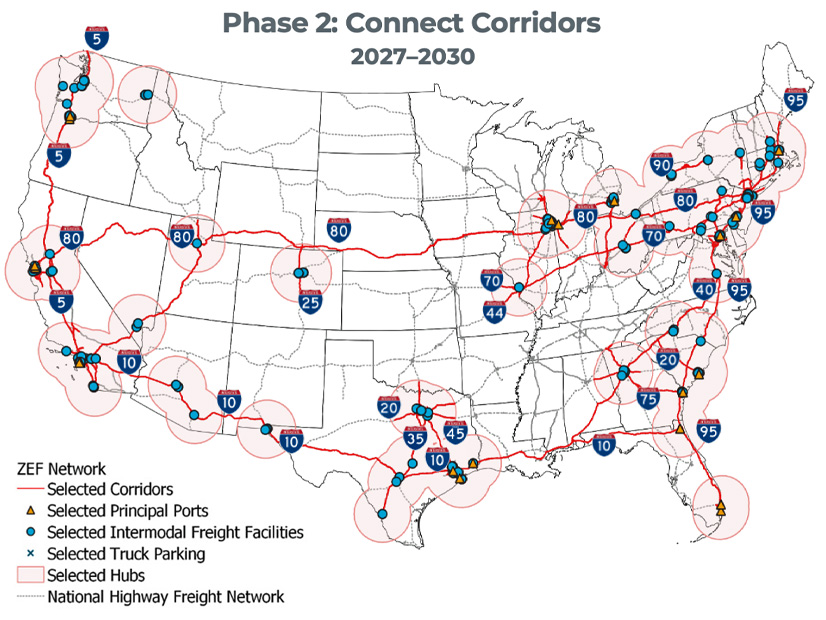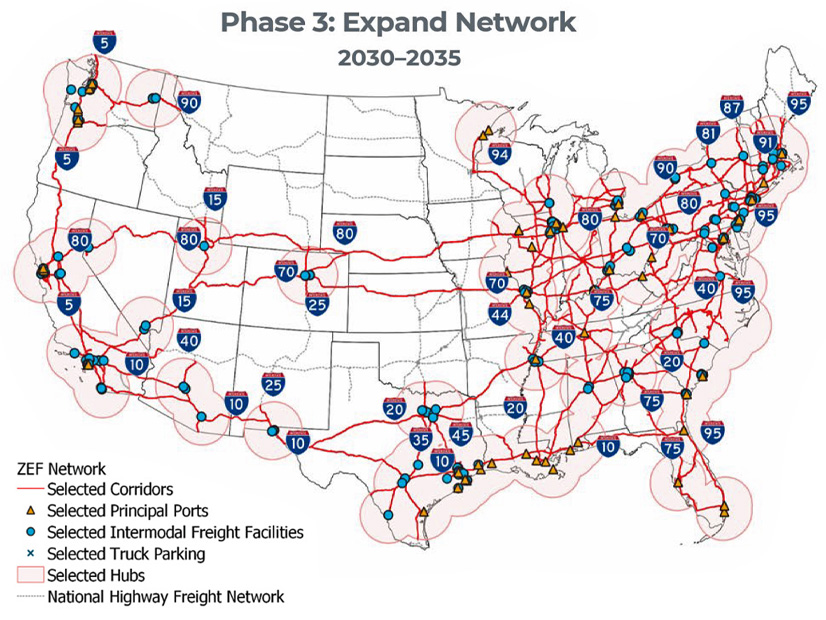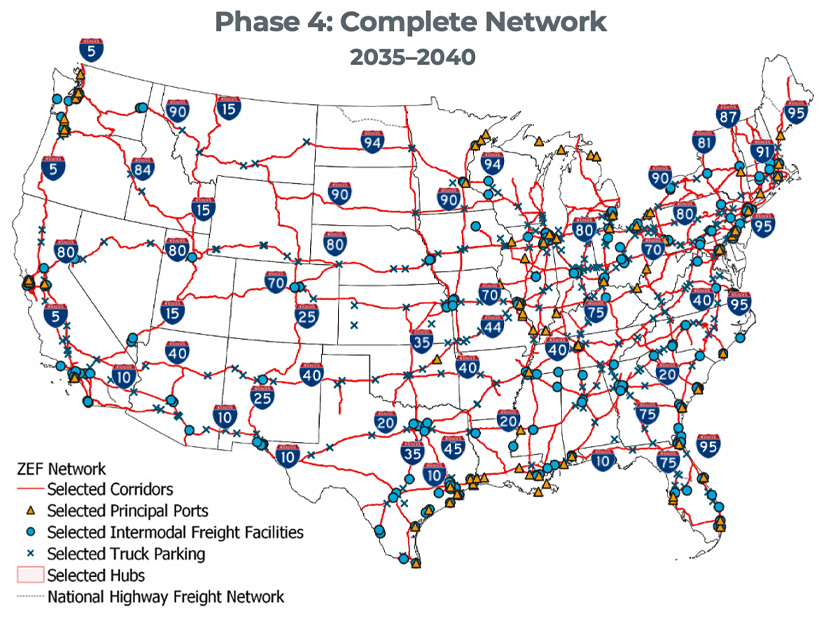FERC has approved a CAISO proposal allowing transmission lines outside California to join the ISO under a new subscriber-funded model that avoids allocating project costs to the ISO’s load-serving entities (ER23-2917).
Under CAISO’s “subscriber participating transmission owner” (PTO) program, the developer of a transmission project not chosen in CAISO’s transmission planning process can solicit generation-owning customers to subscribe to service on a line designed to deliver energy into California. The project owner then can turn operational authority of the line over to the ISO, joining the balancing authority areas as a “subscriber PTO,” a category of owner ineligible to recover costs through the ISO’s transmission access charge (TAC) — the mechanism CAISO uses to bill load-serving entities for their transmission use.
The plan, which CAISO’s Board of Governors approved in July 2023, is designed to help California draw on clean energy resources outside the state to meet its ambitious greenhouse gas reduction goals while alleviating financial risks associated with building new merchant transmission. (See CAISO Board OKs Plan to Admit Subscriber-funded Transmission Lines.)
“The commission has long required a merchant transmission facility’s owner and its willing customers to assume the full market risk for the cost of constructing the facility and ensure that no captive customers are required to pay for the cost of the facility,” FERC wrote in the March 12 order. “Here, subscribers of the capacity on the subscriber PTO’s transmission facilities will be responsible for paying the entire cost of constructing those transmission facilities, and no transmission revenue requirement for the subscriber PTO transmission facilities will be included in the TAC.
“Therefore, we find CAISO’s proposal to be consistent with the commission’s policy regarding cost recovery for merchant transmission facilities.”
The subscriber PTO program will require applicants to obtain approval from CAISO’s board to join the balancing area, execute a transmission control agreement, place transmissions assets and associated entitlements under the ISO’s operational control, and satisfy the requirements applicable to other PTOs.
In exchange for funding the project, subscribers will receive scheduling priority on the associated transmission paths. Initial subscriber-owned generation interconnecting with CAISO through the subscriber PTO’s transmission will be studied through the PTO’s transmission interconnection process, rather than the ISO’s generator interconnection process.
The program is open to existing transmission lines and those being planned or developed.
Nonsubscriber Charges Prompt Protest
Protests filed with FERC against the subscriber PTO model focused on how those PTOs will be compensated when nonsubscribers use their lines.
The proposal calls for CAISO to assess the TAC rate for nonsubscriber imports using the scheduling points associated with a subscriber PTO’s transmission facilities, while assessing the ISO’s wheeling access charge (WAC) rate for nonsubscriber exports and “wheeling-through” transactions at those points.
At the same time, each subscriber PTO can develop a nonsubscriber $/MWh usage charge that cannot exceed the application TAC rate at the time the PTO files its charge for FERC approval.
“Thus, while nonsubscribers will pay CAISO the current TAC or WAC, the subscriber PTO would receive an amount no greater than the TAC rate via the nonsubscriber usage rate accepted by the commission,” FERC noted in the order. “CAISO explains that, if the total TAC and WAC revenue contributed by transactions on the subscriber PTO’s facilities exceeds the total calculated nonsubscriber usage payment then the excess amount will be added back to the regional access charge for allocation to the other participating TOs besides the subscriber PTO.”
When WAC revenue is insufficient to cover nonsubscriber charges, CAISO will draw on nonsubscriber TAC revenues to cover the balance before distributing those revenues to other CAISO PTOs.
In a jointly filed protest, Pacific Gas and Electric and Southern California Edison complained that subscriber PTOs should not be compensated for nonsubscriber use of their transmission lines because those lines will be fully paid for by the subscribers.
“As an initial matter, and contrary to protestors’ arguments, the commission has not held that a facility’s costs can be allocated to customers only following a determination that the facility is necessary for reliability, economic, policy or other reasons through the CAISO transmission planning process,” the commission wrote. “In any case, we disagree with protestors that compensation for nonsubscriber use of a subscriber PTO’s transmission facilities conflicts with the commission’s longstanding policy that a merchant transmission facility’s owner and its willing customers must assume the full market risk for the cost of constructing the merchant transmission facility, and that no captive customers are required to pay for the cost of the facility.”
The commission declined to address the protestors’ concerns about how the nonsubscriber usage rate will be formulated, saying the issue was outside the scope of the current proceeding and best addressed in future proceedings dealing with rates proposed by subscriber PTOs. FERC also dismissed a request to sever the nonsubscriber rate provisions from the proposal and reject them.
“Regarding protestors’ concerns that the TAC could increase as a result of the nonsubscriber usage rate, we find, based on the record before us, that the subscriber PTO model is unlikely to result in an increase in the TAC, and, should an increase occur, any such increase would not be due to the subscriber PTO recovering any of the costs for constructing the subscriber PTO’s initial transmission facilities through the TAC,” the commission found. It also noted that CAISO’s response to a FERC deficiency letter in January clarified that the nonsubscriber usage rate would be required to decline in line with any future reduction of the TAC.
TransWest Request Denied
FERC rejected a request by TransWest Express for guidance on “a potential framework to determine the nonsubscriber usage rate,” saying the subject was outside the scope of the proceeding and reiterating that the issue would be addressed in future rate filings.
The proposed TransWest Express project, a 700-mile line designed to carry 3,000 MW of wind energy from Wyoming to a CAISO interconnection point in Nevada, likely will become the first transmission facility to join the ISO under the subscriber PTO program.




